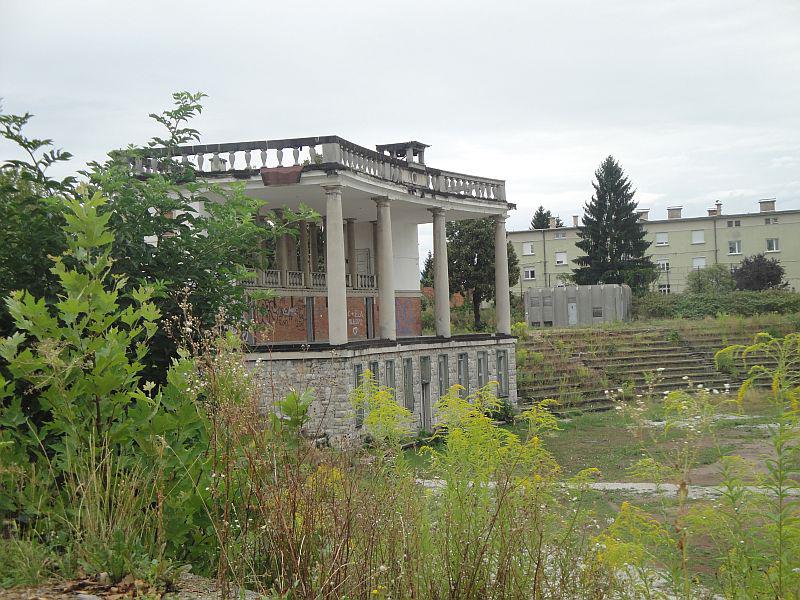
Visitors to Ljubljana’s Bežigrad district may stumble upon a derelict stadium. However, even years of neglect cannot conceal the beauty of the stadium’s architecture, featuring a modern reinterpretation of classical forms. The storied stadium is the work of Jože Plečnik, the best-known Slovenian architect of all time, and represents one of the most characteristic examples of his interwar style.
In brighter days, the Bežigrad Stadium was the pride of Ljubljana. Initially designed for the Catholic “Orel” sports association, its construction proceeded in stages after “Orel” was abolished in 1929. Throughout the thirties, however, the stadium hosted various sporting events. In 1935, it also became a large religious venue when the Catholic Church held its Eucharistic Congress. Plečnik even designed an altar-like addition on the stadium for the event.
World War II saw one of the darkest chapters in the stadium’s history. In 1944, members of the Home Guard, and Slovenian anti-Communist militia, swore loyalty to Nazi Germany on the occasion of Hitler’s birthday. The entire stadium was draped in Nazi flags, symbolizing the fascist grip on the Slovenian capital.
After the war, the stadium became the showcase for some of the most important sporting events held in Slovenia. It became well-known for its track-and-field events, where a number of national records were set. However, it was soccer that really put in on the map, and made “Bežigrad” a household word throughout Yugoslavia. For decades, it hosted Ljubljana’s Olimpija soccer team, and after Slovenia’s independence, it became the home field for the country’s newly-established national soccer team.
The stadium was also the venue for various cultural and music events, and hosted everyone from Lenny Kravitz to Metallica. In 1994, it was eve the venue for Jeux Sans Frontières, a pan-European game show.
By the late 1990s, however, the stadium had become outdated and undersized for the needs of a city that had changed from a provincial town into a national capital. FIFA, soccer’s international governing body, also warned that the stadium no longer met its standards for international games.
In the new millennium, the stadium found itself empty and awaiting restoration. A local businessman, Joc Pečečnik, promised that the stadium would be modernized and greatly enlarged, while retaining Plečnik’s unique architecture. Even the construction of a large hotel was planned next to the site. In part because of the economic crisis, the plans came to naught.
The stadium, now closed off to visitors, is overgrown with weeds and Plečnik’s masterful architecture is in danger of slowly crumbling away. One hopeful sign was an open-air hockey game between Ljubljana and Zagreb that was held at the stadium in 2013, but the stadium’s long-term fate remains uncertain. A structure that had once been Ljubljana’s pride is now desperately waiting a better tomorrow, which could save Plečnik’s architectural masterpiece from a truly inglorious end.

































































